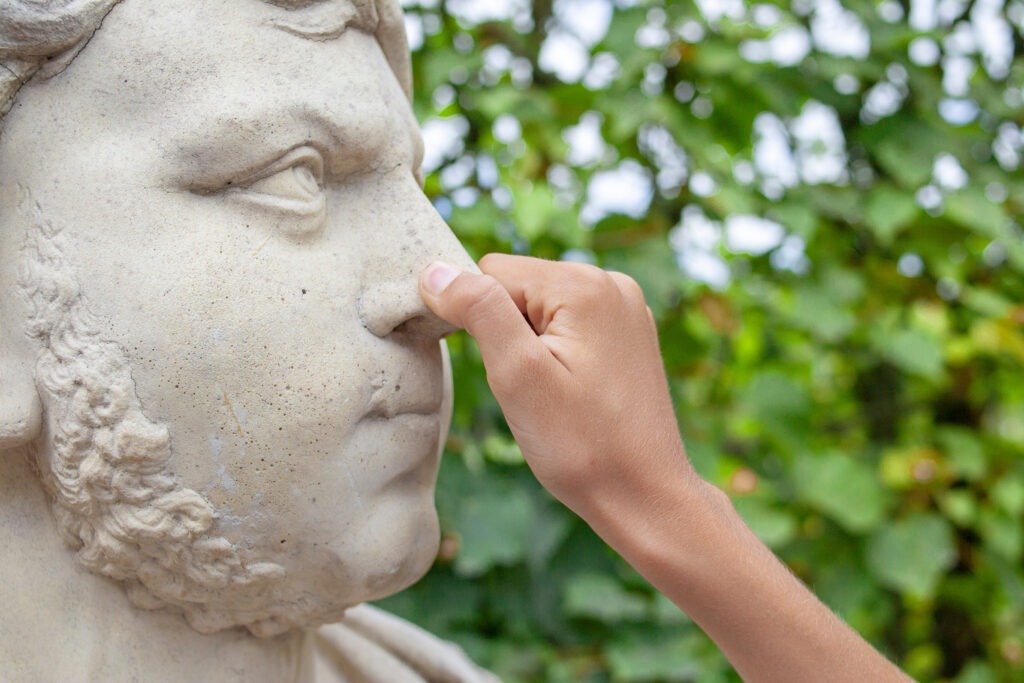Mold Starts In The Nose

I’m here to explain why your nose is mold’s first target and how to protect it to lower your risk of asthma and chronic issues. Ready to clear the air and conquer mold? Let’s get started!
Why Mold Hits Your Nose First
Your nose is your body’s front door for air, and mold spores love to sneak in there. Mold exposure often begins with nasal symptoms, which can escalate if ignored. Here’s why your nose takes the hit:
- Mold’s Entry Point: Inhaled mold spores and mycotoxins irritate your nasal passages, causing inflammation.
- Early Warning: Sinus issues can be your body’s first clue that mold’s around, even before other symptoms show.
- Health Ripple Effect: Nasal inflammation can lead to bigger problems, like chronic sinus irritation, ear ringing, or asthma.
Think mold’s affecting you? Take my Mold Questionnaire to check.
Chronic Sinus Irritation and Asthma Risk
Studies show a strong connection between mold, chronic sinus irritation (aka chronic rhinosinusitis or CRS), and asthma risk. Those at more risk for developing asthma from a mold exposure are those with chronic rhinosinusitis. Here’s what you need to know:
- Chronic Rhinosinusitis (CRS): Persistent sinus inflammation (stuffy nose, facial pain, or reduced smell) lasting 12+ weeks.
- Mold’s Role: Mold spores trigger CRS by causing ongoing nasal irritation and immune reactions.
- Asthma Link: CRS from mold increases your chances of developing asthma, especially in damp environments.
How Mold Triggers Nasal Trouble
Mold doesn’t just irritate your nose—it sets off a chain reaction. Mold and mycotoxins disrupt your nasal health in specific ways:
- Spore Irritation: Mold spores inflame nasal tissues, causing stuffiness or sinus pressure.
- Mycotoxin Damage: These toxins impair your nasal defenses, making infections or allergies worse.
- Immune Overload: Chronic exposure overwhelms your immune system, leading to persistent sinus issues and potential microbial colonization of your sinuses.
Learn more in my book, Break the Mold.
Protect Your Nose from Mold
You can fight back against mold’s nasal attack! I recommend starting with your nose to reduce inflammation and lower asthma risk. Here’s how to protect yourself:
- Use Nasal Sprays: Nasal sprays soothe inflammation and clear mold spores—check out options in my Nasal Sprays category.
- Rinse Regularly: Use a saline rinse to flush out mold spores and reduce irritation.
- Boost Immunity: Support your nasal defenses with nutrients like Vitamin C and Vitamin A.
- Avoid Moldy Spaces: Steer clear of damp, musty areas, and test your home for mold if needed.
- Stay Proactive: Monitor symptoms and act early to prevent chronic rhinosinusitis or asthma.
You’re Ready to Breathe Easy!
Mold may start in your nose, but you don’t have to let it win. By recognizing symptoms like stuffiness or sinus pain and using nasal sprays from my Nasal Spray category, you can lower your risk of developing chronic rhinosinusitis, and maybe lower your risk of asthma connected to mold exposure.
You’re ready to breathe freely and conquer mold! Save this guide for sinus flare-ups, and explore more solutions in my book, Break the Mold.
Join my newsletter for more tips on mold recovery and wellness.
Disclaimer This content is health information and not intended as personal medical advice. Viewing will not establish a doctor-patient relationship. It is not intended to diagnose, treat, cure, or prevent any disease or medical condition. The information discussed is not intended to replace the advice of your healthcare provider. Reliance on information provided by Dr. Jill Crista, employees, or others appearing at the invitation of Dr. Crista is solely at your own risk.
